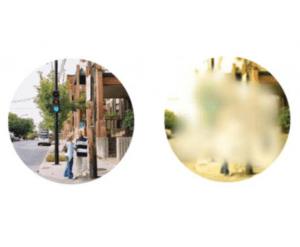The role of ultraviolet radiation in age-related macular degeneration.
Visual perception is the response to visible radiation reaching the retina with wavelengths between 380 and 760 nm of the electromagnetic spectrum. Optical radiation also includes ultraviolet (UV) radiation from 100 to 380 nm and infrared radiation from 770 to 10’000 nm. Most UV radiation (UVA and UVB) below 295 nm is absorbed and blocked by the cornea and lens, and only a fraction of the wavelengths up to 320 nm reaches the retinal pigment epithelium (RPE).
It is postulated that UV and blue light cause damage associated with age-related macular degeneration (AMD). Indeed, the RPE is a cell layer with a high metabolic activity. Also, it is highly prone to oxidative stress, which leads to pay particular attention to it in the case of AMD. The cumulative effect of electromagnetic radiation induced retinal insults contributes to the degeneration of the retina and the RPE.
RPE damage caused by long-term repetitive exposure to solar irradiation is involved in the pathogenesis of AMD.


Age-related macular degeneration is a major cause of vision loss in the population over the age of 65. The number of people in the United States with advanced AMD will most likely increase by 2.9 million through 2020.
Oxidative stress and reactive oxygen molecules (ROM) are involved in the pathogenesis of AMD. In the animal model, long-term exposure to short-wave irradiation causes damage similar to that found in AMD patients.
AMD is characterized by an accumulation of intracellular lipofuscin, an extracellular deposit called drusen and a thickening of Bruch’s membrane, which progressively leads to degeneration with a loss of the RPE and photoreceptor cells in the macular region.
In advanced AMD, as the disease progresses, Bruch’s membrane is altered, allowing choroidal neovessels to grow through the blood-retinal barrier to form a choroidal neovascular complex accompanied by subretinal exudates with damage to the RPE and receptors, resulting in irreversible vision loss






